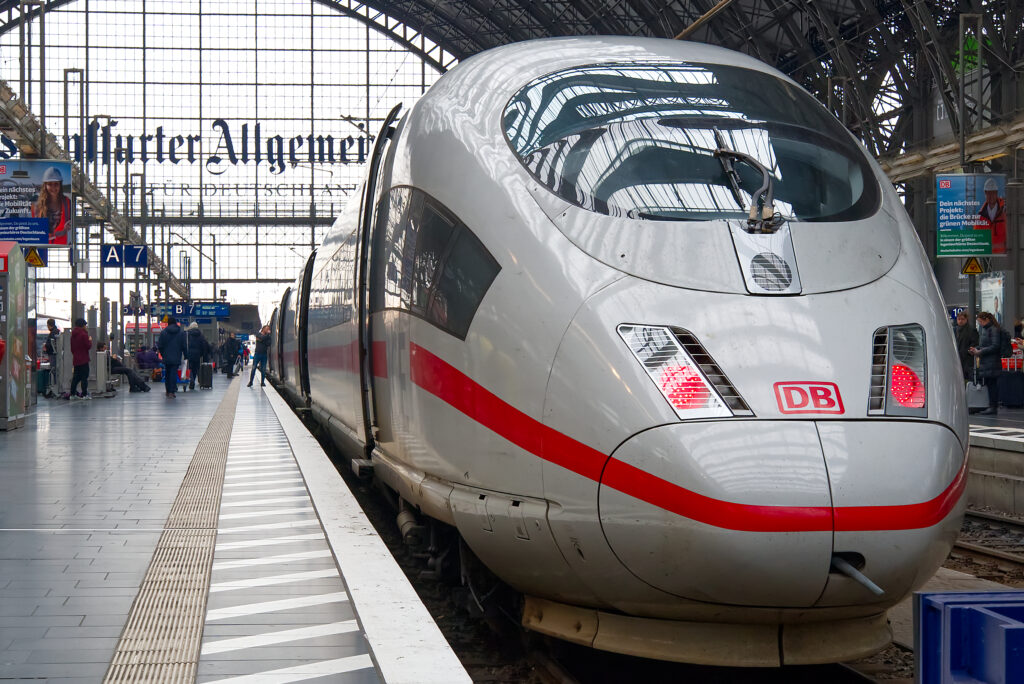Deutsche Bahn (DB), Germany’s national railway company, is set to launch a new digital ticketing system this autumn. The aim is to simplify international train travel across Europe. This move is part of a broader European Union initiative to make rail transport more connected, accessible, and environmentally friendly.
Currently, booking a train journey between different countries in Europe is often difficult. Passengers need to use several websites or buy multiple tickets from different operators. DB plans to change that. With the new system, international trips will be as easy to book as domestic ones.
At the center of this upgrade is the Open Sales and Distribution Model, also known as OSDM. It is a new digital standard that allows rail companies to share data and access each other’s ticketing platforms. This means that one railway company can offer tickets for another company’s trains, even across borders.
DB hopes to have this system fully in place by the end of 2026. By then, travelers will be able to buy combined tickets for most major European rail services. These tickets will be available on DB’s website and its mobile app, DB Navigator. This doesn’t mean there will be one single European train ticket, but it will make planning multi-country journeys much easier.
Today, passengers often lose certain rights if they buy separate tickets for each part of their trip. If one train is late and causes a missed connection, the passenger might not be able to get a refund or a new ticket. This is a problem when the tickets are from different companies.
The European Commission is preparing a proposal to fix this. New rules are expected later this year. These would make it mandatory for companies to provide rebooking or compensation, even on cross-border trips with multiple operators. This change is part of the EU’s wider plan to protect passengers and encourage more people to travel by train.
Deutsche Bahn’s new system is only one part of the puzzle. While OSDM makes it easier to share data, it doesn’t force companies to work together on ticket sales or passenger rights. Some experts believe more needs to be done. They suggest that the EU should set firm rules for how data is shared and how tickets can be combined and refunded.
Despite these challenges, DB is moving forward with the plan. The first step is to link the system with Austria’s ÖBB and Switzerland’s SBB. These partners already have strong connections with DB. More partnerships with other European rail companies are expected soon.
This system will be especially helpful for long journeys that currently require many steps to book. For example, a trip from Berlin to Barcelona might now involve checking different national railway websites and buying several separate tickets. With the new platform, the entire trip could be booked in one go.
There are concerns about the digital standard being used. DB has spent years working on the OSDM system. Changing to a different model could mean losing that investment and delaying the project. That’s why DB supports using OSDM as the base standard across Europe.
The move comes at a time when more people are choosing trains over planes. In 2024, DB launched a new high-speed train between Berlin and Paris. This route became very popular, helping DB to achieve a 22 percent rise in international ticket sales compared to previous years. This was the best performance since before the COVID-19 pandemic.
The rise in train travel is partly driven by growing concern over climate change. Trains are seen as a greener alternative to air travel. They use less energy and produce fewer emissions. As a result, the EU is pushing for better train services as part of its climate goals.
Making it easier to book and combine train journeys is a key part of this plan. It could help reduce the number of short flights in Europe. This would support the EU’s target to cut greenhouse gas emissions in the coming years.
The new system is not perfect yet. Legal protections for passengers need to improve. And not all rail companies are ready to join. But the progress made by DB shows what is possible when technology and policy work together.
With strong support from the EU and growing demand from travelers, the dream of a seamless European rail network is becoming more real. Train travel could soon become the first choice for people crossing borders in Europe.


